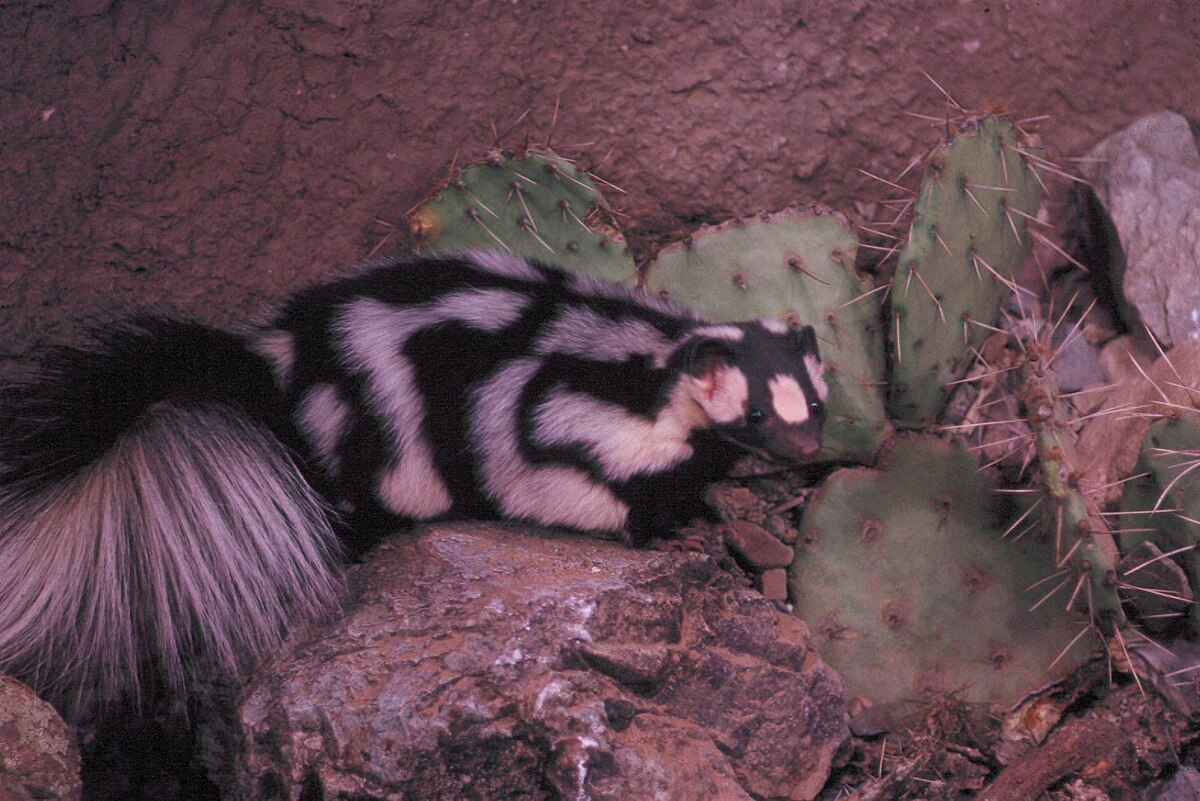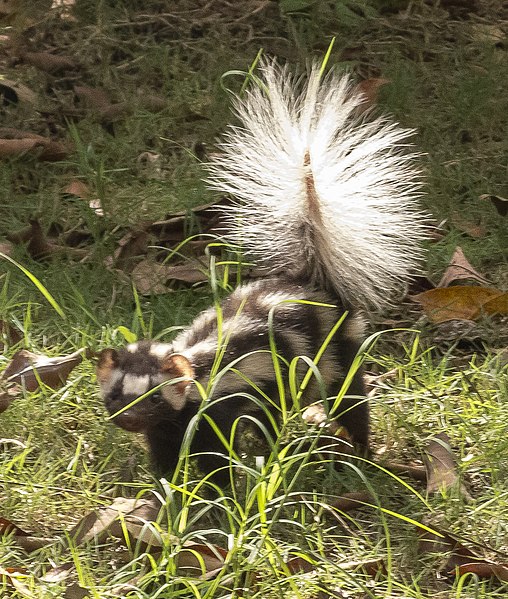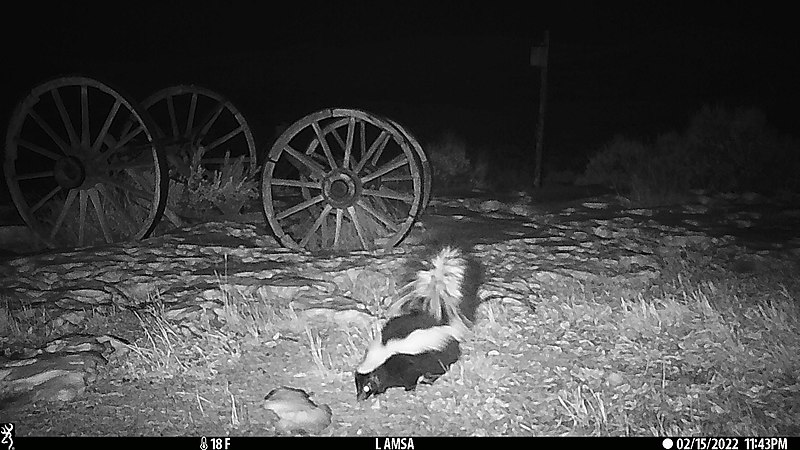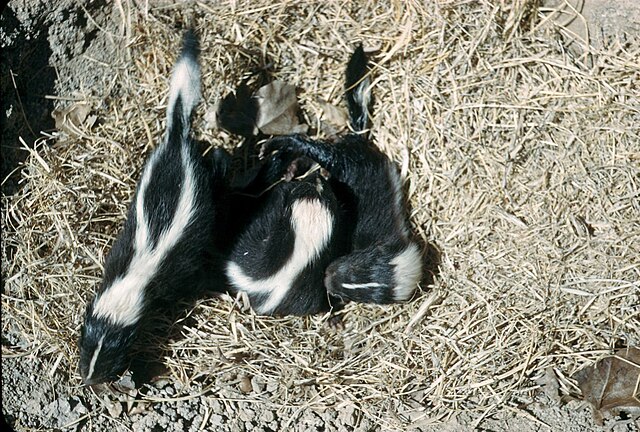Learn-Along Guide
Help us improve our
Learn-Along guides!
At The Children’s Hour, we are constantly working to improve our work and tools for educators. It helps us to hear from users to make these guides the best they can be, and to collect your feedback.
Thanks for taking our brief survey after you use our guides.
Katie Stone & Lorraine Archibald
Grade Levels
4-8
Subjects
Language Arts, Science, Social Studies, Health, Art, Media Literacy
Grade Levels
4-8
Subjects
Language Arts, Science, Social Studies, Health, Art, Media Literacy
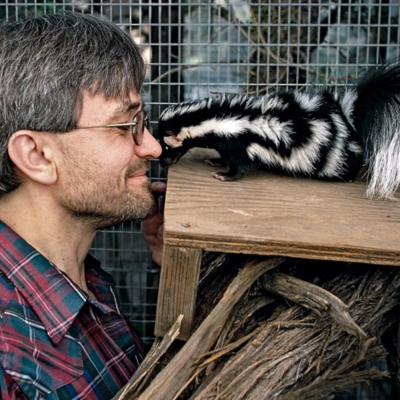
Dr. Jerry Dragoo rehabilitates skunks. Photo credit John MacLean Photography
On this episode, we learn about one of the most misunderstood creatures-skunks! Katie and the Kids Crew speak with our guest Dr. Jerry Dragoo, the founder and director of The Dragoo Institute for the Betterment of Skunks and Skunk Reputations. He is a world renowned mephitologist, or biologist who studies skunks.
In the show we also learn many interesting facts about skunks and their behavior. We hear about stories of skunks through song and writing. Complete the activities below to challenge what you know and learn more!
Adaptation
When something changes or adjusts to different situations and conditions in order to improve it’s chances at survival.
Taxonomy
A field of science concerned with naming, describing, and classifying things into organized groups or types.
Vocabulary
Vocabulary words can be found throughout the page in bold.
Sulfur
A chemical element, identified with an “S” and atmoic number 16. When it combines with other elements and creates certain compounds, it often has a strong smell or odor, like of rotten eggs.
Nocturnal
An animal behavoir of being active during the night. Nocturnal animals have highly developed senses of hearing, smell, and eyesight.
Neutralize
To stop something from harming or having an effect, to make it neutral.
Skunk Myths and Facts
| Myth | Fact |
| Skunks stink | Living skunks do not stink, they have the ability to release an odor through their anal glands, they release the spray only when they feel threatened.. When they do it’s not the skunk who stinks, it’s you! |
| Skunks have rabies | Just like many other animals such as dogs, it is possible that skunks become infected with rabies, but it does not occur naturally and not every skunk has it. |
| Skunks are carnivores | Although they are categorized as “Carnivora” skunks are actually omnivores. Along with small animals they also eat bugs, plants, flowers, fruits, and vegetables. |
| Tomato juice removes smell of skunk spray | We learned about a study that proved that tomato juice does not eliminate the odor of skunk spray, but it can temporarily cover up the smell since it also smells strong, and the best way to neutralize skunk spray for example, from pet fur, is to use hydrogen peroxide, baking soda and shampoo and avoid their eyes. |
Discussion Challenge:
Friends or foes?
Do you think of skunks as pests that need to be removed, or as creatures that should be protected? Create an argument that agrees with one or both of these sides, then explain your argument to someone who may agree or disagree with you.
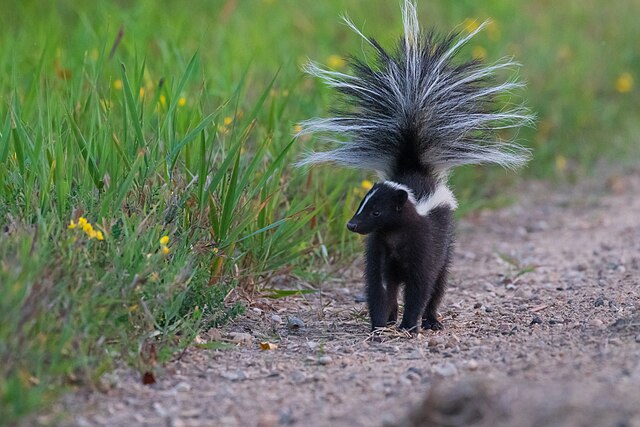
Skunk with tail rasied. Image source.
Skunk Taxonomy
As we learned on the show, there are four main types of species of skunks that are found in North America. Striped, Spotted, Hooded and Hog-nosed Skunks.
Scientists use taxonomy, a field of science concerned wiht naming, describing, and classifying things into organized groups in order to better understand skunks, their relation to their environment and to other animals.
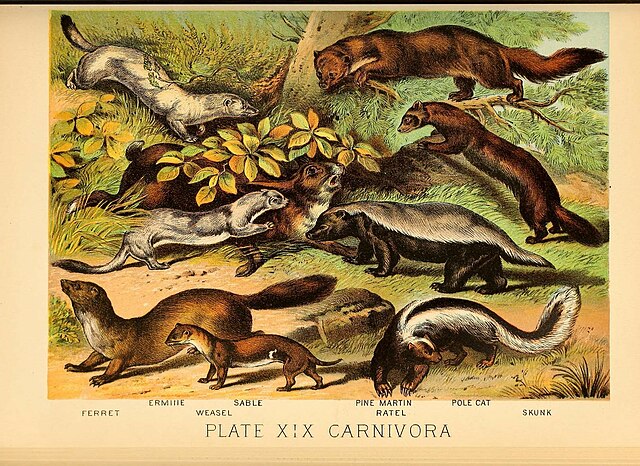

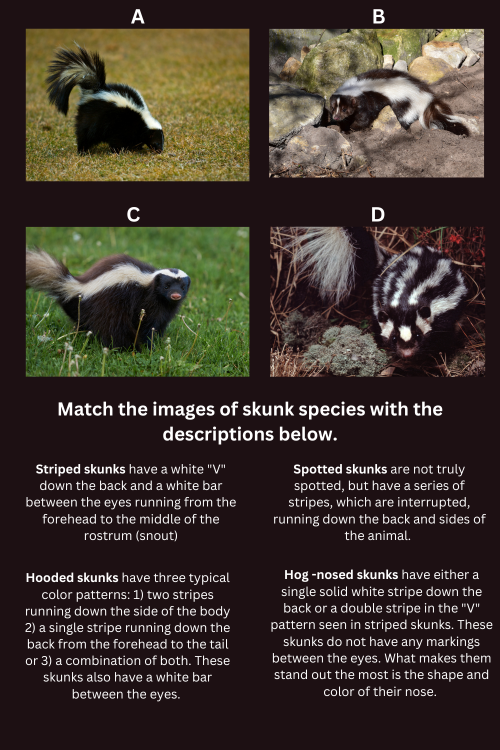
Challenge: Can you match the species of skunk with the images? Infographic created with canva.
Activity: Animal Taxonomy
Read about taxonomy with Kids Britannica. Then, think of your favorite animal or one that you want to learn more about. Search for the animal in the search bar on this website to see the taxonomy classification information. Complete the template to classify the animal and compare it to another.
Skunk Adaptations
Skunks can live in many different types of enviornments thanks to their adaptations,-changes or adjustments to different situations and conditions in order to improve chances at survival. Some of its coolest adaptations include:
Spray
Skunks can release a chemical spray that is an oil and can become a gas. They can release a stream to hit a precise target, or a cloud to cover a wide area. It works as a defense to stop predators from harming the skunk. What makes is so special is the incredibly strong odor, due to the compounds of chemical elements like Sulfur.
Markings
Skunk markings are different based on species and individual variations, but they all work as adaptations that provide a warning to predators. The black and white contrast and provide a signal that you should stay away, this adaptation makes some predators decide that going after the skunk may not be worth the risk.
Nocturnal
Skunks are nocturnal whcih means they have adapted to be active at night, this has many benefits including saving energy when it may be too warm during the day, and helps them to avoid threats and competition for food from other animals. Animals that are noctural often have higher abilities in senses including hearing and smelling.
Activity: Nocturnal Creature Card
Check out this list of top 20 Nocturnal Animals. Choose an animal to learn about. Research more information about the animal here and here, take notes on interesting facts you find. Then, create a creature card that you could trade or collect. Include interesting information about the animal, its appearance, behavior and other adaptations. Draw and color your card or use a resource to create a digital card. Trading Card Creator, Pokecard Creator
Learning to Love Skunks
On our show we learned things about Skunks that help us love them. They play a very important role in our ecosystem, they are kind and gentle unless threatened, they warn before they spray in cool ways like headstands, they are very smart and adaptable, and so much more! We also learned that even despite how great they are, skunks have a bad reputation. People are afraid of getting spray and their pets being harmed by skunks. It is important that people learn about skunks because skunks found in so many places. There are many ways to help skunks and special instructions on how to handle them, that many people may not know about. Help skunks and your community by completing the activity.
Activity: Help Skunks with a Public Service Announcement
Think about what you have learned about skunks from our show, then visit this humane society website to learn more. Choose between 1-3 important facts of information that you wish to share with others. Write a short speech, draw a flyer, or a make a video that teaches others what you would like them to know about how to help and protect themselves and their animals from skunks.
Media Journal: Skunks
After watching one or both of the videos, use the guiding questions to reflect on what you learned. Share your information with another person.
What did I already know about this topic?
What did I learn from the video?
What new questions or wonders do I have?
More Activities and Resources
Learn more skunk facts at National Geographic Kids: Skunks
Practice How to Draw a Skunk
Research striped skunks at Animal Diversity Web
Watch the PBS Nature episode: Is That Skunk? featuring Dr. Jerry Dragoo.
Here are some videos about the book series A Boy Called Bat for kids.
Learn more about taxonomy with Library for Kids.
Educators, check out this lesson on taxonomy and classification.


